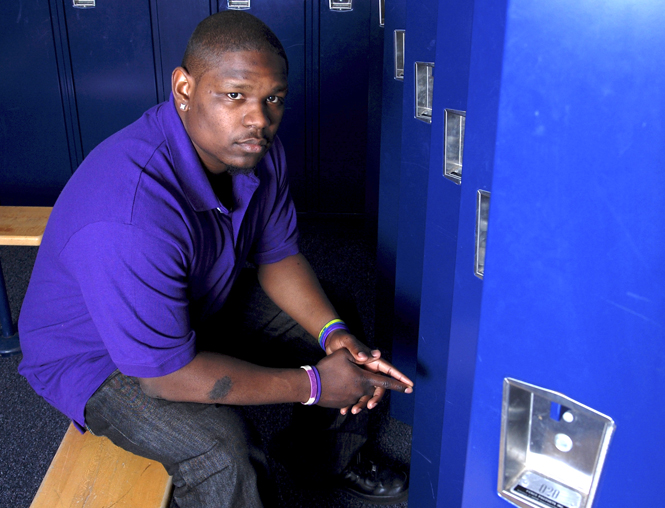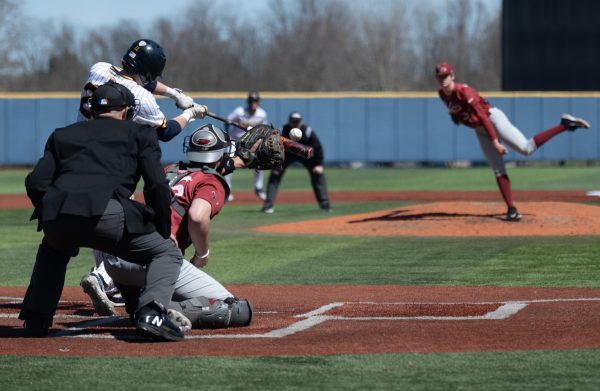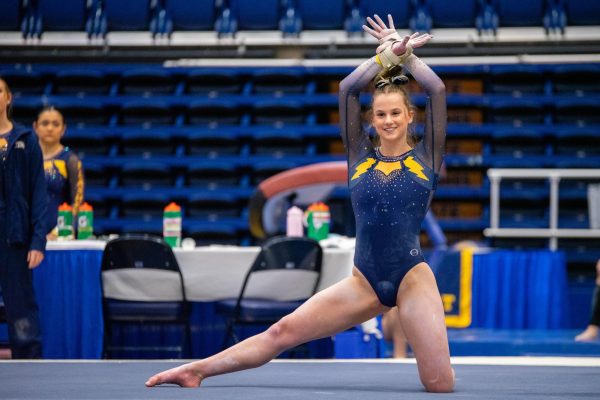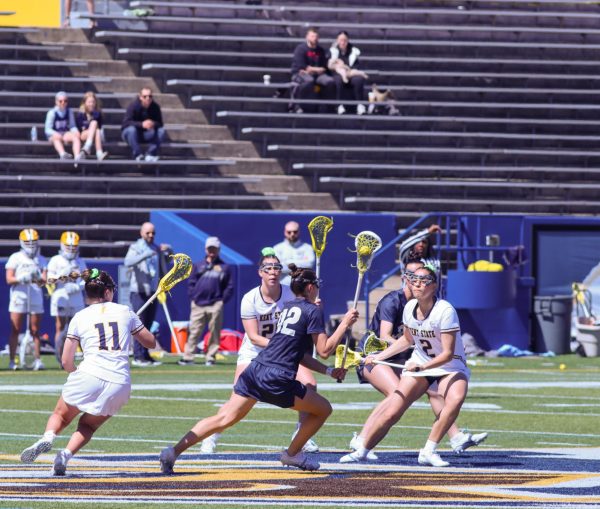Athletes beware, concussions can carry long-term effects
March 30, 2011
Quinton Rainey had a headache when he lined up in his position last season against Toledo.
The previous play, Rainey, a former defensive lineman for Kent State, was playfully hit on the helmet by one of his linebacker teammates who was trying to get amped up for the upcoming play.
“When he hit me, I didn’t feel all there,” Rainey recalled. The hit gave Rainey a funny feeling. His head didn’t hurt too badly, but something inside him said he wasn’t right.
As the offense broke the huddle, Rainey lined up in his three-point stance. As Toledo’s quarterback handed the ball off to the running back, Rainey pursued the ball carrier. Rainey and his teammates conjoined on the tackle, smashing into each other on the play. Rainey’s head instantly hurt.
“The next thing I know, the play started,” Rainey said. “I didn’t even remember the play starting.”
That’s when the nightmare began. Rainey, a 5-foot-10 235-pound Virginia Beach, Va., native, had an ordinary headache. On a scale of one to 10, Rainey rated the initial headache at about a four.
He had a concussion. A concussion is typically an acceleration-deceleration injury. According to the NCAA, an estimated 1.6 to 1.8 million athletes suffer concussions each year.
The brain is inside spinal fluid, and when the body’s momentum is carried forward and stopped, the brain keeps moving forward and hits the front of the skull, resulting in a concussion.
Throughout the course of the game, the headaches worsened. As the pain grew, Rainey’s main concern was helping his teammates despite the apparent injury.
The former defensive lineman kept playing. He attributed his ability to keep playing to his undeterred ambition to win.
“I think it was my competitive drive and muscle memory,” Rainey said. “The whole game we set up in situations, and I think my muscles and competitive drive just took me to my spot and put me in my position.”
At Kent State, athletes who suffer a concussion must sit out at least one week, no matter what. Trent Stratton, Kent State director of sports medicine, estimated the number of concussions at Kent State to be about 13 in the 2010 season, which is an increase from the estimated 10 concussions last season.
Dr. Nilesh Shah, a Kent State team doctor, said he doesn’t think concussions are any more prevalent than in previous years.
“I think we’re recognizing them more,” Shah said. “I think we’re treating them more aggressively.”
The treatment includes extensive memory and balance testing along with rest. Once a player passes the tests, he or she can return to action.
After the game was over and the Flashes lost, Rainey couldn’t remember where he was. When his teammates found out, they rushed to tell team doctors.
Rainey remembered his name, but that was it. He didn’t remember who the team played.
“As a senior, you don’t want to come out of the game for any reason,” Rainey said. “But honestly, I didn’t come out because I didn’t want (doctors) to tell me I had a concussion. I just wanted to finish the game, and hopefully my headache will go away.”
Shah said athletes who suffer one concussion usually don’t have any long-term side effects.
Looking back on the situation, Rainey said he felt like he should have told someone sooner because of the risks be put himself in by playing. Most people do not see long-term effects after one concussion, but if they experience additional concussions, athletes may experience second impact syndrome. According to the Mayo Clinic, the risks include epilepsy and multiple brain injuries.
Shah said it’s tough sometimes to test players who are so anxious to get back onto the field.
“That’s where our other testing comes into play,” he said. “All right, you’re telling me, let’s test you and find out.” The tests include a memory and balance test.
While adhering to NCAA policy, Kent State also follows the 2009 Zurich Consensus Statement. Every two years, a team of physicians get together to discuss concussions and come to a general outlook on the injury.
“There is no cookbook way (to view concussions) because there is no cookbook way,” Shah said. “It’s not like an ACL tear. Concussions don’t present themselves the same way.”
In a survey conducted by the NCAA from 2004 to 2009, the rate of concussions in games per 1,000 football players was a mere 3.1.
Although the number is low, Rainey said he thinks the NCAA should better protect athletes from concussions.
“I think the tests should be a little bit harder,” he says. “They need questions that make you think a little bit more.”
Contact Brad Tansey at [email protected].
























